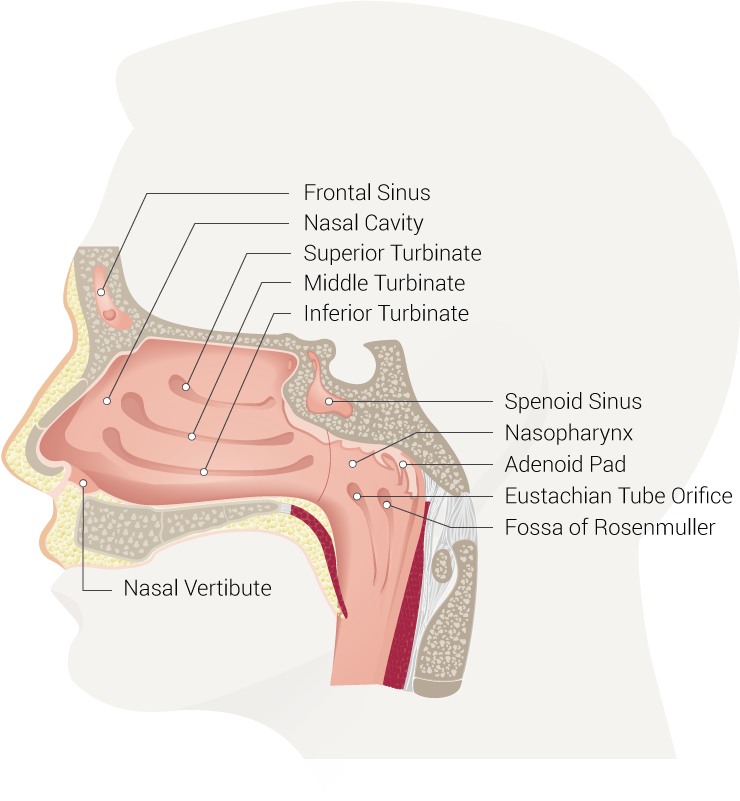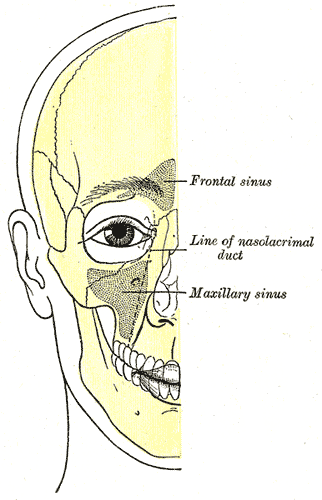[1]
Nuñez-Castruita A, López-Serna N, Guzmán-López S. Prenatal development of the maxillary sinus: a perspective for paranasal sinus surgery. Otolaryngology--head and neck surgery : official journal of American Academy of Otolaryngology-Head and Neck Surgery. 2012 Jun:146(6):997-1003. doi: 10.1177/0194599811435883. Epub 2012 Jan 20
[PubMed PMID: 22267494]
Level 3 (low-level) evidence
[2]
Vaid S, Vaid N. Normal Anatomy and Anatomic Variants of the Paranasal Sinuses on Computed Tomography. Neuroimaging clinics of North America. 2015 Nov:25(4):527-48. doi: 10.1016/j.nic.2015.07.002. Epub 2015 Aug 20
[PubMed PMID: 26476378]
[4]
Cavalcanti MC, Guirado TE, Sapata VM, Costa C, Pannuti CM, Jung RE, César Neto JB. Maxillary sinus floor pneumatization and alveolar ridge resorption after tooth loss: a cross-sectional study. Brazilian oral research. 2018 Aug 6:32():e64. doi: 10.1590/1807-3107BOR-2018.vol32.0064. Epub 2018 Aug 6
[PubMed PMID: 30088551]
Level 2 (mid-level) evidence
[5]
Zha Y, Lv W, Gao YL, Zhu ZZ, Gao ZQ. [Design of cross-sectional anatomical model focused on drainage pathways of paranasal sinuses]. Lin chuang er bi yan hou tou jing wai ke za zhi = Journal of clinical otorhinolaryngology, head, and neck surgery. 2018 May:32(9):683-686. doi: 10.13201/j.issn.1001-1781.2018.09.010. Epub
[PubMed PMID: 29771086]
Level 2 (mid-level) evidence
[6]
Liu J, Dai J, Wen X, Wang Y, Zhang Y, Wang N. Imaging and anatomical features of ethmomaxillary sinus and its differentiation from surrounding air cells. Surgical and radiologic anatomy : SRA. 2018 Feb:40(2):207-215. doi: 10.1007/s00276-018-1974-8. Epub 2018 Jan 24
[PubMed PMID: 29368251]
[7]
Kuntzler S, Jankowski R. Arrested pneumatization: witness of paranasal sinuses development? European annals of otorhinolaryngology, head and neck diseases. 2014 Jun:131(3):167-70. doi: 10.1016/j.anorl.2013.01.008. Epub 2014 Apr 5
[PubMed PMID: 24709406]
[8]
Pohunek P. Development, structure and function of the upper airways. Paediatric respiratory reviews. 2004 Mar:5(1):2-8
[PubMed PMID: 15222948]
[9]
Villarreal R, Wrobel BB, Macias-Valle LF, Davis GE, Prihoda TJ, Luong AU, McMains KC, Weitzel EK, Yao WC, Brunworth J, Clark DW, Nair S, Valdés CJ, Halderman A, Jang DW, Sivasubramaniam R, Zhang Z, Chen PG. International assessment of inter- and intrarater reliability of the International Frontal Sinus Anatomy Classification system. International forum of allergy & rhinology. 2019 Jan:9(1):39-45. doi: 10.1002/alr.22200. Epub 2018 Sep 14
[PubMed PMID: 30216705]
[10]
Demiralp KO, Kursun Cakmak S, Aksoy S, Bayrak S, Orhan K, Demir P. Assessment of paranasal sinus parameters according to ancient skulls' gender and age by using cone-beam computed tomography. Folia morphologica. 2019:78(2):344-350. doi: 10.5603/FM.a2018.0089. Epub 2018 Oct 3
[PubMed PMID: 30280374]
[12]
Turri-Zanoni M, Arosio AD, Stamm AC, Battaglia P, Salzano G, Romano A, Castelnuovo P, Canevari FR. Septal branches of the anterior ethmoidal artery: anatomical considerations and clinical implications in the management of refractory epistaxis. European archives of oto-rhino-laryngology : official journal of the European Federation of Oto-Rhino-Laryngological Societies (EUFOS) : affiliated with the German Society for Oto-Rhino-Laryngology - Head and Neck Surgery. 2018 Jun:275(6):1449-1456. doi: 10.1007/s00405-018-4964-x. Epub 2018 Mar 29
[PubMed PMID: 29600317]
[13]
D P, Prabhu LV, Kumar A, Pai MM, Kvn D. The anatomical variations in the neurovascular relations of the sphenoid sinus: an evaluation by coronal computed tomography. Turkish neurosurgery. 2015:25(2):289-93. doi: 10.5137/1019-5149.JTN.10638-14.0. Epub
[PubMed PMID: 26014015]
[14]
Praweswararat P. Cholesterol Granule of the Ethmoid Sinus: A Case Report. Journal of the Medical Association of Thailand = Chotmaihet thangphaet. 2016 Feb:99 Suppl 2():S220-2
[PubMed PMID: 27266241]
Level 3 (low-level) evidence
[15]
Bahşi I, Orhan M, Kervancıoğlu P, Yalçın ED. Morphometric evaluation and surgical implications of the infraorbital groove, canal and foramen on cone-beam computed tomography and a review of literature. Folia morphologica. 2019:78(2):331-343. doi: 10.5603/FM.a2018.0084. Epub 2018 Sep 4
[PubMed PMID: 30178457]
[17]
Pipolo C, Saibene AM, Felisati G. Prevalence of pain due to rhinosinusitis: a review. Neurological sciences : official journal of the Italian Neurological Society and of the Italian Society of Clinical Neurophysiology. 2018 Jun:39(Suppl 1):21-24. doi: 10.1007/s10072-018-3336-z. Epub
[PubMed PMID: 29904833]



